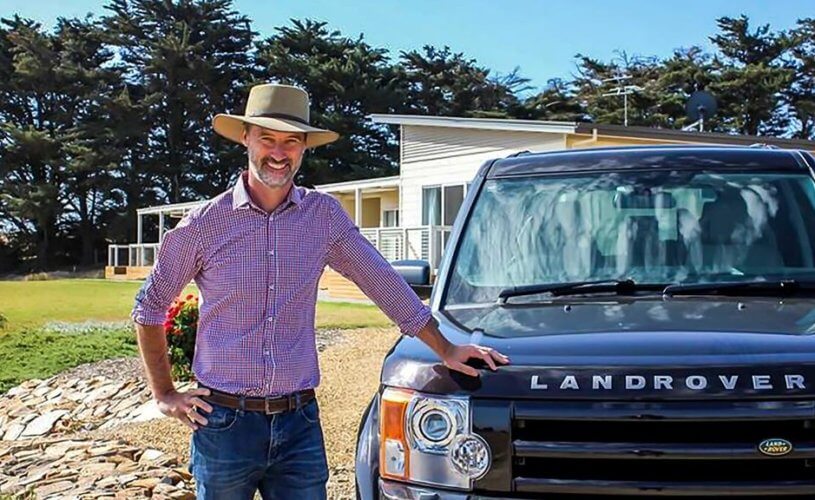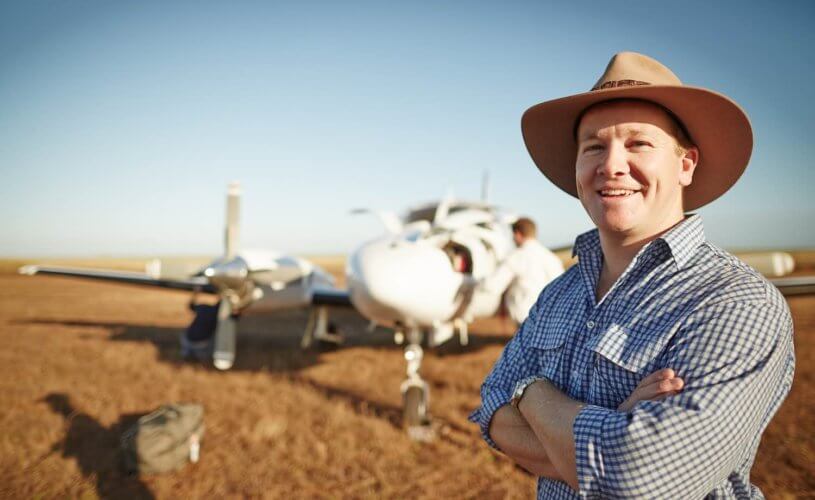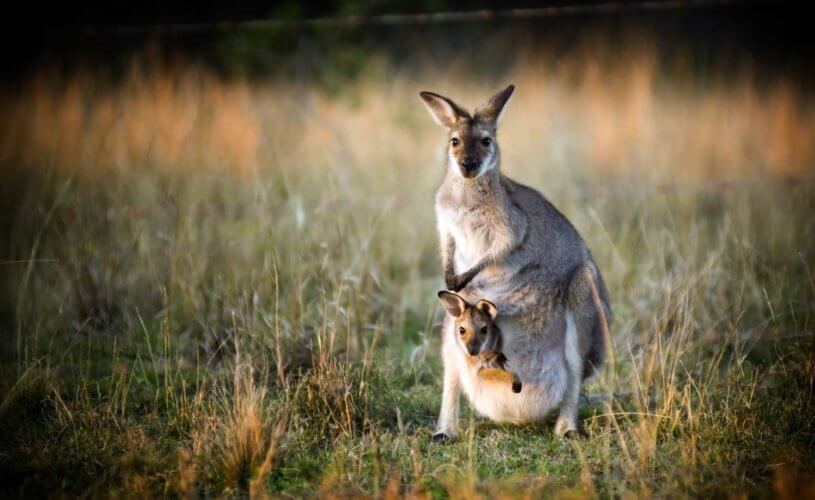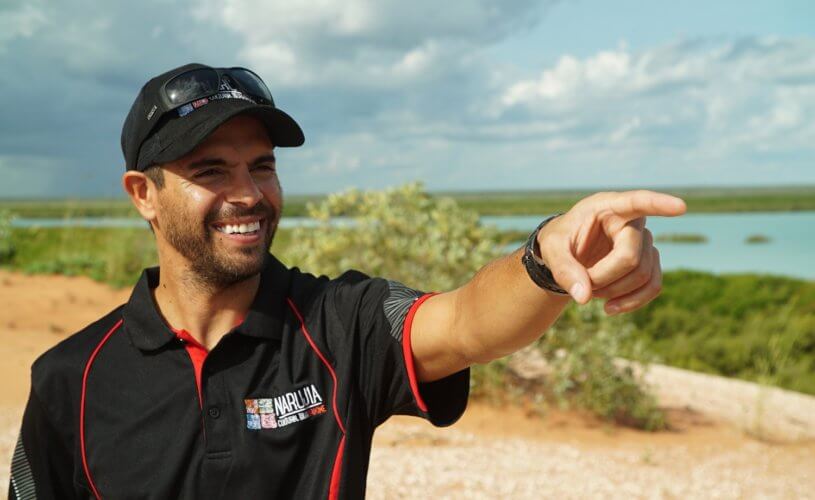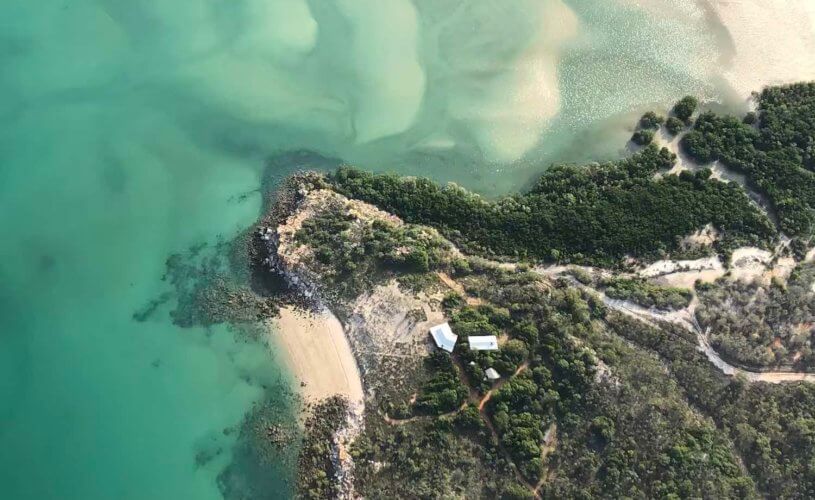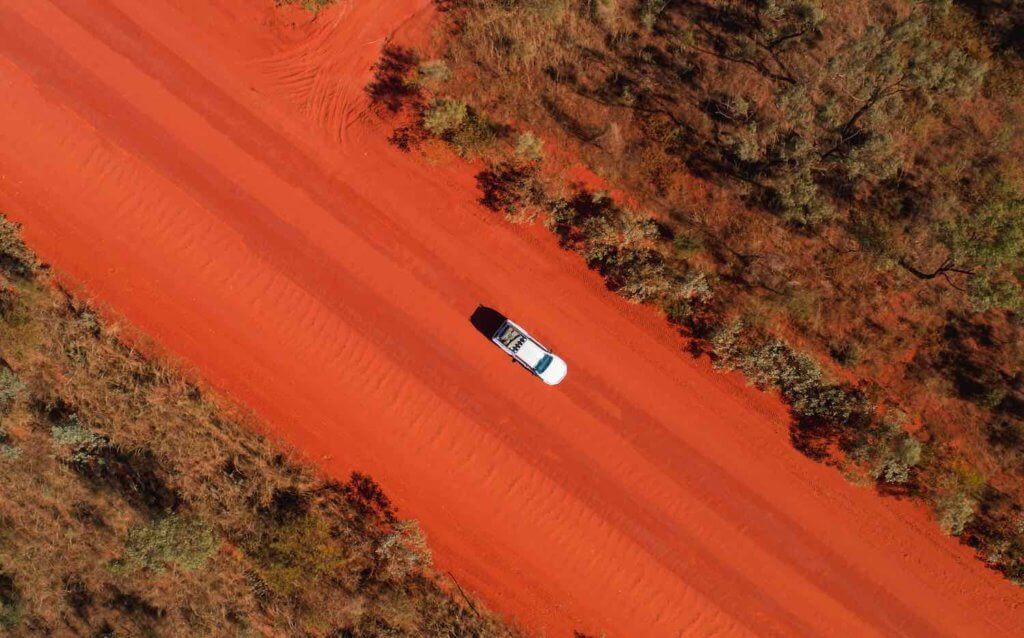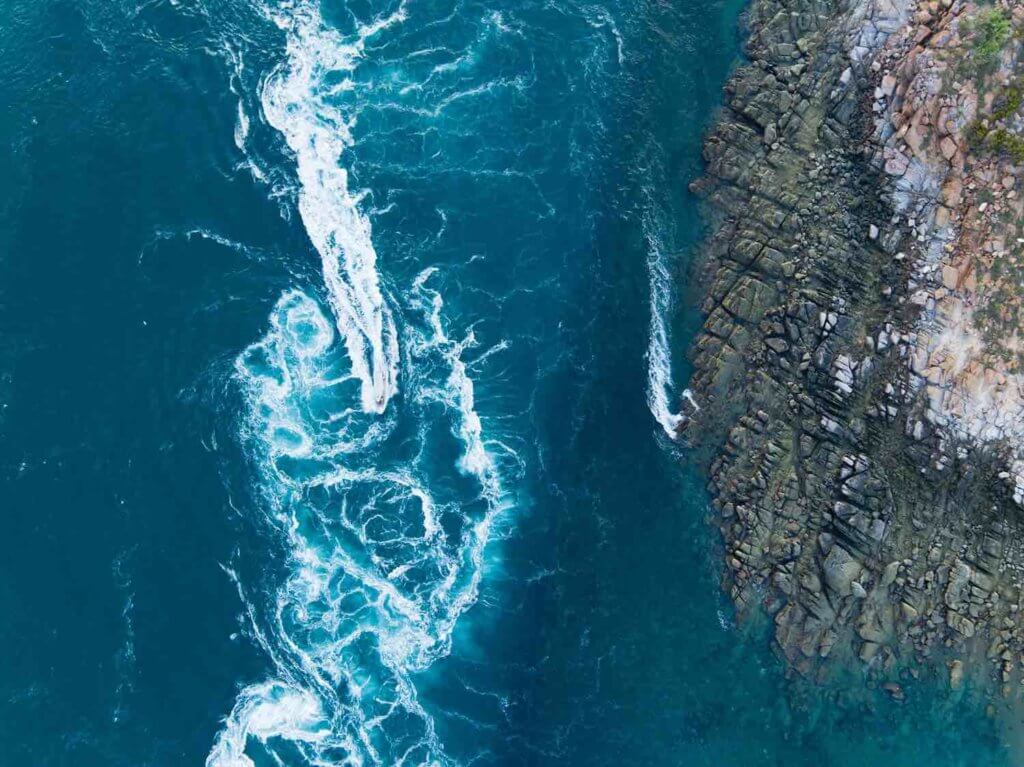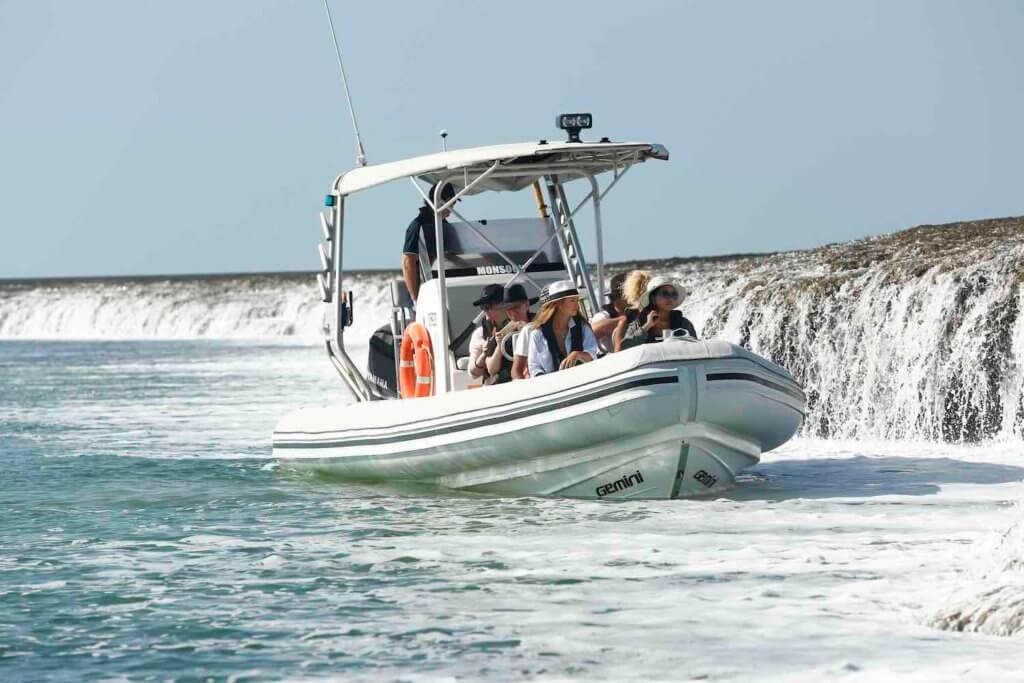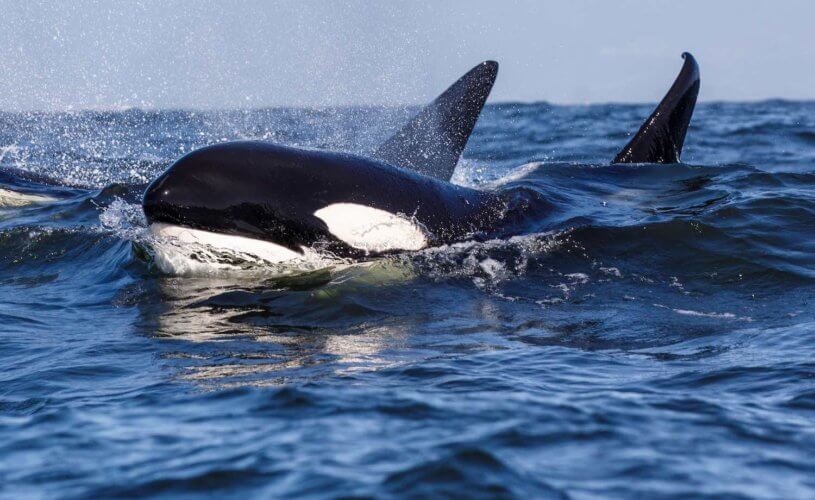A highlight for any wildlife enthusiast is the opportunity to spot baby Australian animals such as kangaroo or koala joeys. The autumn and spring seasons are a terrific time to spot these young marsupials, as they are exploring the world outside of their mother’s pouch and becoming more independent.
This suggested itinerary covers a broad range of habitats including semi-arid, open woodlands, wet and dry rainforests along with coastal heathlands, providing opportunities to see a wide range of species including Tammar Wallabies, Kangaroo Island Kangaroos, Brush-tailed Possums, Red Kangaroos, Common Wallaroos, Yellow-footed Rock Wallabies, Eastern-grey Kangaroos, Swamp Wallabies, Red-necked Wallabies, Tasmanian Pademelons, Tasmanian Bettong, Long-nosed Potoroos and Common Wombats. Aside from this, the spring season is also prime for seeing nesting birds including Wedge-tailed Eagles and raptors that fledge at this time.
Minimum Suggested Nights: 16 nights, plus a couple of nights on arrival and departure from Australia if desired.
SUGGESTED MONTHS: MARCH, APRIL, MAY, SEPTEMBER, OCTOBER, NOVEMBER
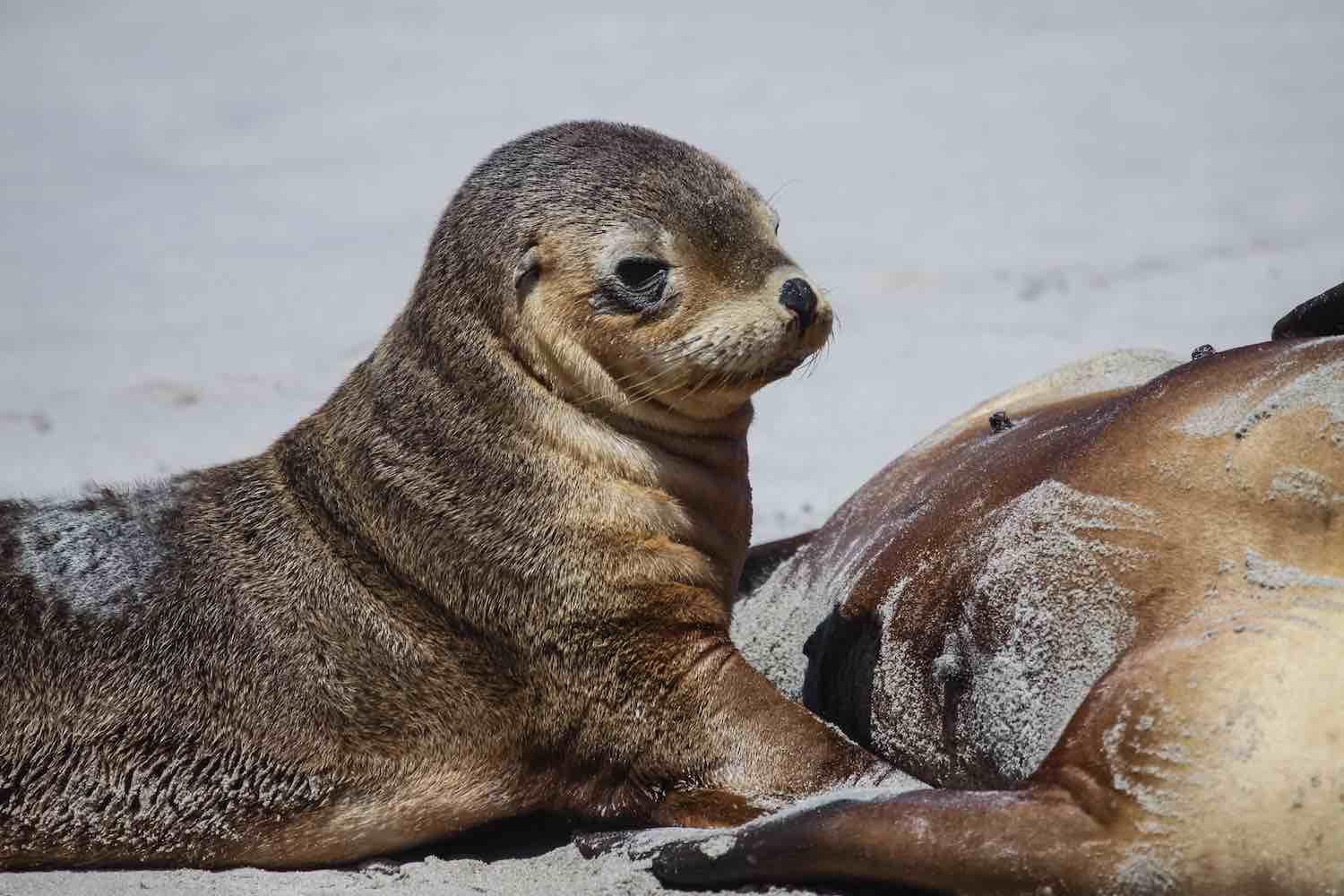
Kangaroo Island In Style
This tour combines the two most popular full day landscape and wildlife experiences; Island Life and Flinders Chase Focus. Guests will be exposed to a broad range of elements that make this island so celebrated, including the the Island’s history, ecology, wildlife, landscape and contemporary lifestyle. Regions visited include the Cygnet Valley, north coast landscape at Stokes Bay, central plateau, south coast landscape at Seal Bay to walk on the beach with Australian Sea-lions and the spectacular wilderness and the dramatic coastline of Flinders Chase National Park.
Iconic landscapes in the southwest corner will deliver endless photographic opportunities especially at Remarkable Rocks, Admirals Arch and Cape du Couedic. Key species regularly encountered are Koalas, Tammar Wallabies, Kangaroo Island Kangaroos, endangered Glossy Black Cockatoos, Short-beaked Echidnas, Australian Sea-lions, Long-nosed Fur-seals and a variety of bush birds and shorebirds and seabirds.
Autumn: Mar-May – Birds
Glossy Black Cockatoos nest in large hollows, Yellow-tailed Black Cockatoos aggregate post breeding (they breed in summer), Red Wattlebirds abundant, Black Swans, Royal Spoonbills, Crested Terns, Caspian Terns, Crimson Rosellas.
Spring: Sep-Nov – Birds
Short-tailed Shearwaters migrate to the area, Superb Fairy-wrens breed and the spectacular blue males are a stunning splash of colour, New Holland, White-eared Honeyeaters, Eastern Spinebills. Rainbow Lorikeets, Purple-crowned Lorikeets. Chestnut-breasted Shelducks, Yellow-billed Spoonbills, Australian White Ibis and White-headed Stilts abundant.
Autumn: Mar-May – Land Mammals & Marsupials
Young Tammar Wallabies are weaned off their mothers and form their own social groups, Kangaroo Island Kangaroo joeys following their mothers around, Short-beaked Echidnas, Common Brushtail Possums usually have one joey at a time in Autumn.
Spring: Sep-Nov – Land Mammals & Marsupials
Kangaroo and wallaby joeys emerge from pouches for the first time, Koala mating begins to occur from September onwards until March, Short-beaked Echidnas will feast upon eat large amounts insects and larvae during Spring.
Autumn: Mar-May – Marine Mammals
Australian Sea-lions bask on the sand in-between fishing trips to the continental shelf, Long-nosed Fur Seal pups can be seen playing around the rock ledges and pools at Cape du Couedic.

The Arkaba Walk
This four day walk traverses the ancient Flinders Ranges where 600 million years of geological history provide spectacular backdrops to the rich array of birds, reptiles and marsupials that call this region home. From dry creek beds, isolated waterholes, lined with 1,000 year old river gums to craggy ridge lines and rolling hills covered in cypress pines to the ancient ramparts of Wilpena Pound, this is some of the most stunning walking country in Australia and provides abundant opportunities to spot Red and Western Grey Kangaroos, Wallaroos, Emus, Wedge-tailed Eagles along with numerous parrots, songbirds, bushbirds and raptors.
Accompanied by expert guides, walkers are provided with a fascinating insight into the ecosystems located across the 60,000 acre private wildlife conservancy, along with the stories of the indigenous inhabitants, early explorers and pioneer settlers.
Autumn: Mar-May – Birds
Black-eared Cuckoos and Brown Songlark migration, Grey-shrike Thrush, Rufous Whistlers, Black-faced Cuckoo-shrikes, Galahs, Australian Ringnecks, Red-rumped Parrots, Emus preparing for the breeding season.
Spring: Sep-Nov – Birds
Striped Emu chicks following their fathers, Wedge-tailed Eagle, Little Eagle, Black Kite and Brown Goshawk fledging, Rainbow Bee-eaters and Sacred Kingfishers arrive to breed.
Autumn: Mar-May – Land Mammals & Marsupials
Western Grey Kangaroos are abundant, Red Kangaroos, Common Wallaroos, Yellow-footed Rock Wallabies, Dingos breeding and occasionally sighted but often heard.
Spring: Sep-Nov – Land Mammals & Marsupials
Short-beaked Echidnas, Red Kangaroo joeys born, Western Grey Kangaroos, Common Wallaroos feeding on shoots and vegetation, Fat-tailed Dunnarts and Stripe-faced Dunnarts breeding and very occasionally sighted.
Autumn: Mar-May – Reptiles & Amphibians
Thick-tailed Gecko (also known as the Barking Gecko) can be heard with it’s distinctive call, Masked Rock Skink, Tree Skink, Boulenger’s Snake-eyed Skink, Bynoe’s Gecko and Central Bearded Dragon, Yellow-faced Whipsnakes.
Spring: Sep-Nov – Reptiles & Amphibians
Breeding males for the Painted, Tawny and Red-barred Dragons exhibit brilliant colours, Central Bearded Dragons, Nobbi Dragons, Thick-tailed Geckos with their barking calls.
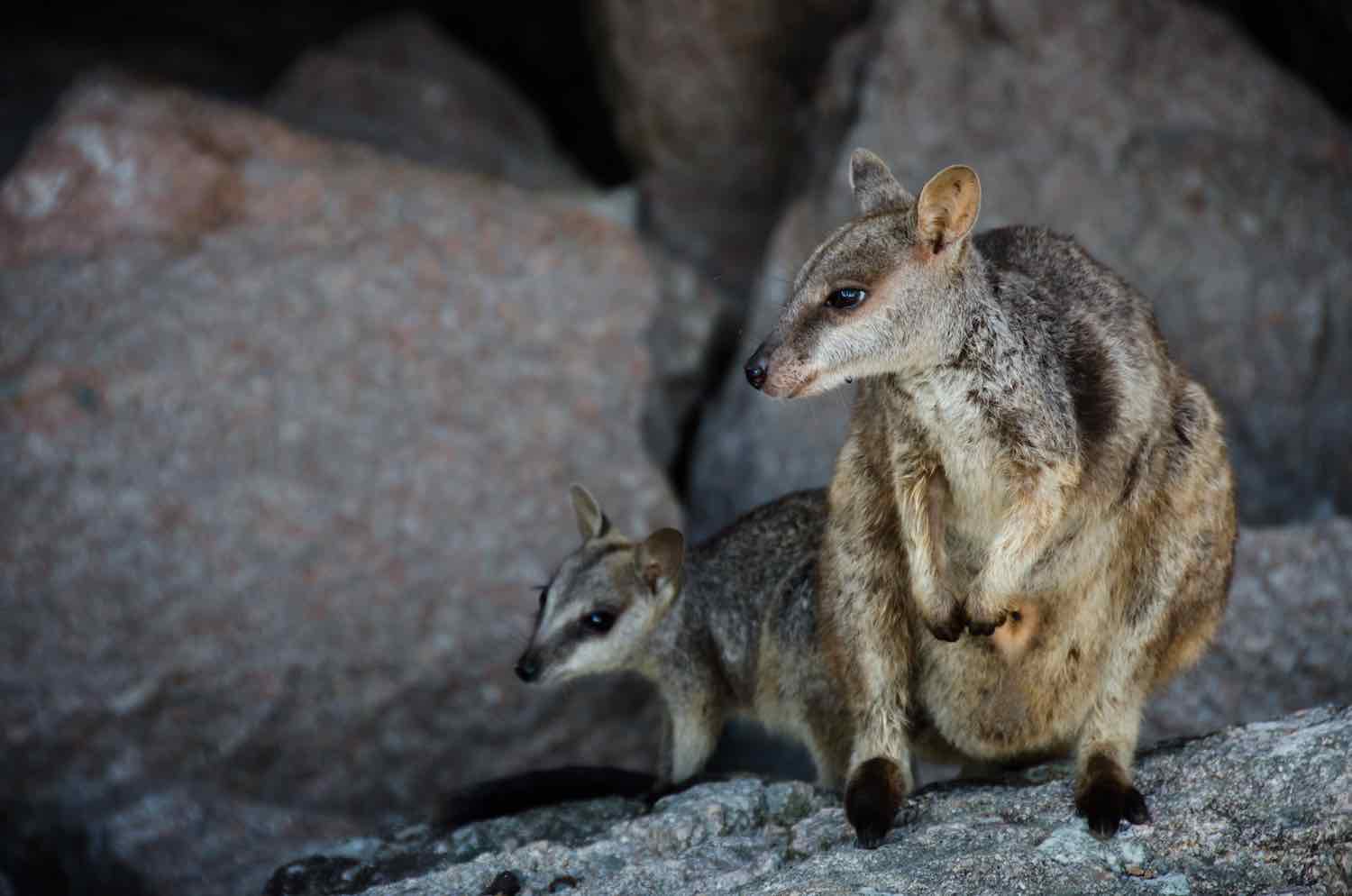
Tasmania Wildlife Encounter
Over one-third of the ‘island’ state is reserved as a conservation area and this epic adventure traverses through some of the most scenic parts, including the World Heritage Listed Cradle Mountain, Rocky Cape, Narawntapu, and Freycinet National Parks. A mix of expansive ancient temperate rainforests, spectacular coastlines, rugged mountains and sparkling highland lakes provide refuge and habitat for a rich array of rare and endemic plants and animals.
Tasmania is a delight for Marsupial lovers, with opportunities to spot Pademelons, Eastern Grey Kangaroos, Bennett’s Wallabies, Common Wombats, Tasmanian Bettongs, Long-nosed Potoroos, Quolls and of course the carnivorous Tasmanian Devil. A wide variety of songbirds, bushbirds, shorebirds and seabirds, including the Little Penguin are also highlights. Guests will be captivated by a cruise on the final day around Bruny Island, spotting Dolphins, Australian Fur Seals and seabirds along the towering 200m dolerite cliffs.
Autumn: Mar-May – Birds
Summer migrants arrive including Welcome Swallows, Tree Martins, Dusky Woodswallows, Striated Pardalotes, Grey Fantails and Swift Parrots. Short-tailed Shearwaters leave the Tasmanian coast on their migration along with other migratory waders such as, Ruddy Turnstones, Red-necked Stints, Common Greenshanks and Eastern Curlews. Beautiful Firetails and Green Rosellas a highlight.
Spring: Sep-Nov – Birds
Fan-tailed, Pallid and Shining Bronze Cuckoos migrate to breed along with Welcome Swallows, Tree Martins, Dusky Woodswallows, Striated Pardalotes, Grey Fantails and Silvereyes and Swift Parrots, 18 million Short-tailed Shearwaters arrive. Little Penguins breed along with Red-capped Plovers, Hooded Dotterels, Pied & Sooty Oystercatchers, Cormorants, Masked & Banded Lapwings and a variety of Gulls and Terns.
Autumn: Mar-May – Land Mammals & Marsupials
Forester Kangaroos, Bennett’s Wallabies, Tasmanian Pademelons, Tasmanian Bettongs and Long-nosed Potoroos have joeys that are weaned off at this time. Tasmanian Devils breed in March, Common Wombats, Short-beaked Echidnas.
Spring: Sep-Nov – Land Mammals & Marsupials
Spring is the peak season for seeing a number of Tasmania’s baby marsupials including Forester Kangaroos, Bennett’s Wallabies, Tasmanian Pademelons, Common Brushtail and Ringtail Possums. Long-nosed Potoroos, Tasmanian Bettongs and Tasmanian Devils also sighted.
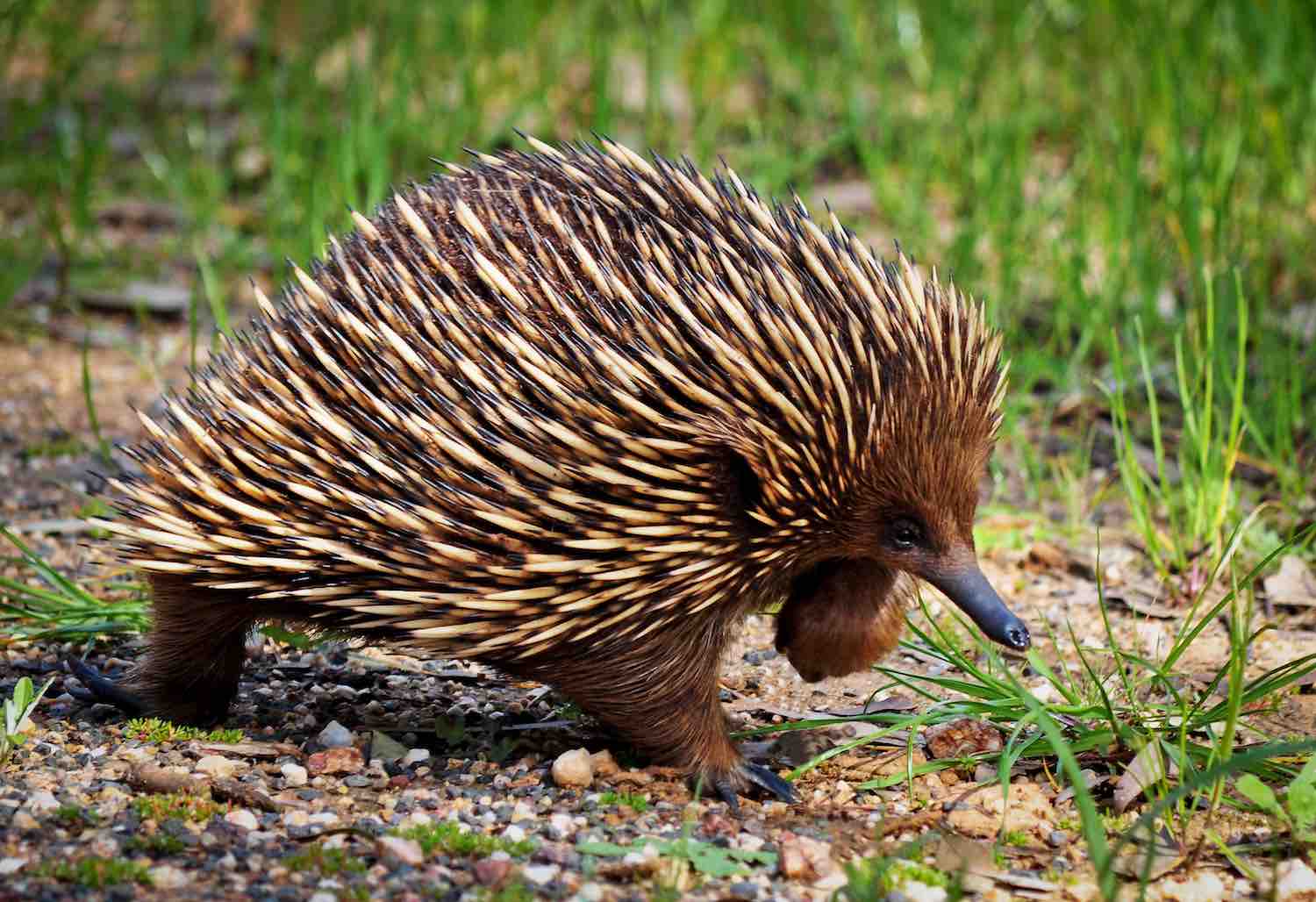
Great Ocean Road
This small group three day journey covers some of the most rugged and awe-inspiring coastline in Australia. Visits to the Serendip and You Yangs National Parks, the Great Ocean Road, Great Otway National Park, the Twelve Apostles, the Shipwreck Coast and volcanoes and lakes of the Western Plains provide dramatic backdrops whilst spotting wild animals including Eastern Grey Kangaroos, Koalas, Echidnas, Emus, Rosellas, Robins, Honeyeaters, raptor birds and various seabirds.
Guests will have the opportunity to walk beside the waves of the mighty Southern Ocean on pristine sands, experience an unforgettable sunset over brilliantly-coloured limestone cliffs and walk through dense rainforests of lush tree ferns. Led by expert guides, visitors will often be able to track and spot the Red-necked Wallaby and adorable Potoroo.
Spring: Sep-Nov – Birds
Tawny Frogmouths roosting, Short-tailed Shearwater migration, Honeyeaters abundant including Red and Little Wattlebirds, Eastern Spinebills, New Holland, Yellow-faced, Tawny-crowned and White-plumed Honeyaters, Black-chinned, White-naped , Spiny Cheeked, Yellow-tufted, Fuscous and Singing Honeyeaters possible, Rainbow, Musk and Purple-crowned Lorikeets.
Autumn: Mar-May – Land Mammals & Marsupials
Eastern Grey Kangaroo joeys discover the world outside, learn to hop, play and graze, Swamp Wallabies, Red-necked Wallabies, Koalas, Common Brushtail Possums at dusk and early evening.
Spring: Sep-Nov – Land Mammals & Marsupials
Baby Koalas (joeys) come out of the pouch for the first time and will ride on their mother’s back late Spring, Common Brushtail and Common Ringtail Possums at dusk, Eastern Grey Kangaroos, Swamp Wallabies, Red-necked Wallabies.
Click here to find out more about Australian travel with Alquemie
Itinerary suggestion courtesy of Australian Wildlife Journeys




